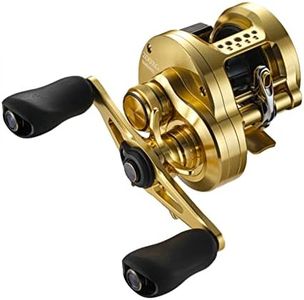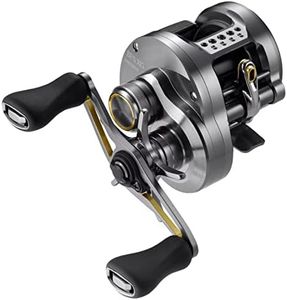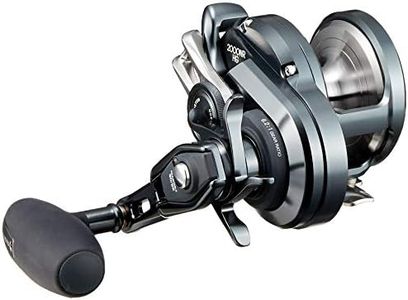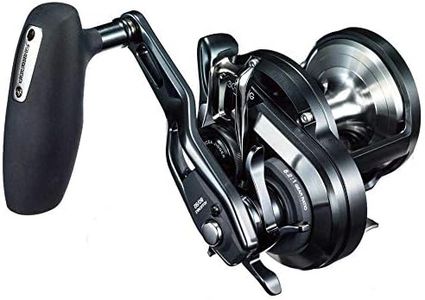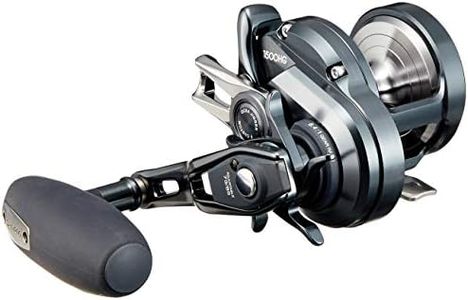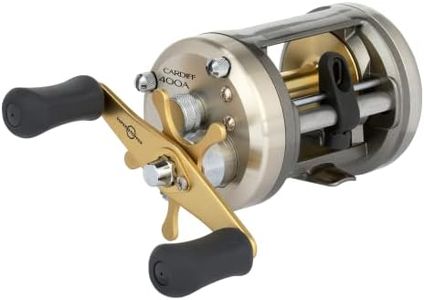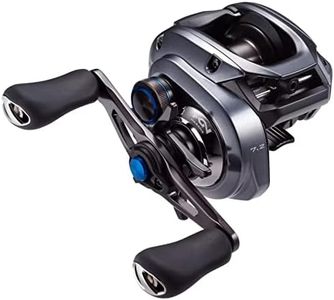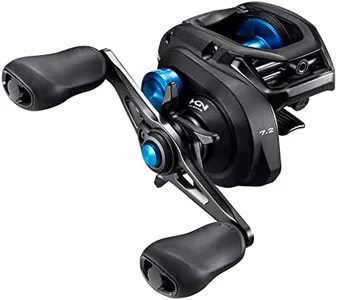We Use CookiesWe use cookies to enhance the security, performance,
functionality and for analytical and promotional activities. By continuing to browse this site you
are agreeing to our privacy policy
10 Best Shimano Baitcasting Reels
From leading brands and best sellers available on the web.Buying Guide for the Best Shimano Baitcasting Reels
Choosing the right Shimano baitcasting reel can really improve your fishing experience, but the best choice depends on matching the reel’s features to the type of fishing you plan to do. Some reels are built for heavy-duty use, while others are designed for finesse and lighter setups. Understanding the key specs will help you pick a reel that feels comfortable and helps you fish effectively in your preferred waters.Gear RatioThe gear ratio tells you how many times the spool turns with each handle rotation. This is important because it affects how fast you can retrieve your line and how much power you have for reeling in fish. Low gear ratios, like 5:1, are slower but provide more torque, making them good for heavy baits or big fish. Mid-range ratios, like 6:1, offer a balance and work for general fishing styles. High gear ratios, like 7:1 or higher, are faster, letting you quickly bring in your lure or catch, great for techniques that need a speedy retrieve. Consider the type of fishing: if you target fast fish or use techniques like flipping, fast ratios are helpful. For deep cranking or fighting heavy fish, slower ratios are usually better.
Line CapacityLine capacity measures how much fishing line the spool can hold, usually noted with the length of line per a certain pound-test. This matters because different types of fishing require different amounts and strengths of line. Smaller capacities are fine for freshwater and lighter setups, while larger capacities are needed for bigger fish or when fishing in deep water. If you fish for bass in small lakes, a modest capacity is enough. For saltwater or large species, more capacity keeps you prepared for longer fights.
Braking SystemThe braking system in a baitcasting reel helps control the rotation of the spool during casting, reducing backlashes (tangles). There are magnetic and centrifugal braking systems, and sometimes both. Simpler systems are easier to adjust, good for beginners. Advanced systems give you more tuning ability to suit different lures and conditions. More braking is useful if you’re learning or casting light lures, while experienced fishers may prefer the fine control of adjustable brakes.
Drag SystemThe drag system lets you set how much resistance a fish feels when it pulls on your line. This is crucial when fighting strong fish, as it helps prevent the line from breaking. Lightweight drags (around 8-12 lbs) suit smaller fish. Medium drags (12-20 lbs) are good for bass or similar species, while high drags (20 lbs or more) are meant for strong, aggressive fish. Pick a reel with a drag range that matches the size and power of the fish you typically chase.
Reel Size and WeightThe size and weight of a reel affect comfort and balance on your rod, especially during long fishing trips. Smaller, lighter reels are less tiring to hold and are great for finesse or light action, but they hold less line and may have lower drag. Larger reels are heavier but offer more power and capacity. Think about how long you'll carry your gear and whether you want a light, easy-to-carry setup or need the strength and capacity of a bigger reel.
Handle DesignHandle design includes the length and grip of the handle, which can impact both comfort and leverage. A longer handle gives more cranking power, better for fighting bigger fish. Different grip materials (like rubber or cork) affect comfort, especially if your hands get wet. If you often fish for tough species, look for a handle that's comfortable and gives solid grip. For casual or finesse fishing, a smaller, lighter handle can be more pleasant.
